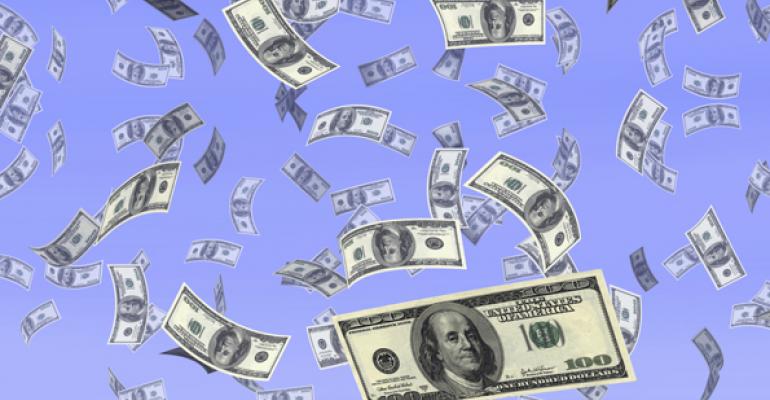The 20-year-old Pokémon in this past week became the hottest smartphone game on the planet with Pokémon Go luring thousands of people out of their homes and into public spaces to capture little monsters.
Pokémon Go, created by Niantic Inc. and The Pokemon Co., was the top free app Monday in both the Google Play store for Android phones and iTunes store for iPhones.
It was introduced on July 6th in the United States, Australia and New Zealand, and by last Thursday, according to Similar Web, it had already been installed on more U.S. Android phones than Tinder and was rivaling Twitter in the number of daily users.
Pokémon Go players walk around with their smartphones and the game, using global positioning and the device’s clock, leads them to various Pocket Monsters that they can capture by throwing a red and white ball. The name Pokémon is the romanized contraction of the Japanese Pokétto Monsutā, or Pocket Monsters.
“The game’s developers have a gold mine on their hands,” said Ryan Goff, social media marketing director at Baltimore, Md.-based MGH, a marketing and communications agency, that represents such foodservice clients as California Tortilla, Great American Cookies, Hot Dog on a Stick, Marble Slab Creamery and Pretzelmaker.
“They’ve found a way to get consumers to actually do something,” Goff said in an email exchange. “And they’re doing it in droves. Once the developers start talking to advertisers, you’re going to see a world of marketing possibilities open up: in-game ads; specials for visiting locations; competitor targeting.”
What can restaurant operators do today to capitalize on the intense Pokémon Go interest?
Goff’s answer is simple: “The biggest thing you need to do today is to set up an account and start playing. If you’ve never experienced the game, you’re not going to understand how to speak to its users. Immerse yourself in the experience and start thinking of reasons why a Pokémon user would not only visit your location, but would then make a purchase.”
The secret to drawing foot traffic to a business is to set up a “Lure Module” at the location, Goff said.
“It attracts Pokémon to a PokeStop for 30 minutes, benefiting anyone in proximity to that location. Users are naturally drawn to those locations through a graphic that notifies them of the PokeStop and promise of catching new Pokémon.”
A Lure Module is an in-game item that can either be earned or purchased using real-world dollars.
“Once a user has acquired a Module, he/she must visit a PokeStop to activate the item,” Goff explained. “Once placed, Pokémon are attracted to the module for 30 minutes. To my knowledge, there is no limit to the number of times a Lure Module can be placed in a single day.”
Lure Modules can be purchases for $1, and they last 30 minutes. Packs of eight Lure Modules are about $7, Goff said.
Goff said the Lure Modules could be promoted, but in a way that Pokémon Go players will understand.
“Make sure you’re speaking the language of the game’s players,” he said. That might include: “Get 10% off your check if you’re Team Mystic!” or “There may or may not be a Pikachu hiding in or around our restaurant today.”
In addition, Goff said promotions might include the restaurant:
-Offering a 10-percent discount based on the team they’ve selected.
-Giving a Pokémon Go player a free appetizer if they’ve captured a rare Pokemon, like Pikachu.
-Letting them know you’ll be setting up a Lure Module around lunchtime or other daypart that could use additional traffic.
Pokémon Go has skyrocketed to popularity, unlike the slow and then stagnant growth of other location-based smartphone apps like Foursquare.
“Foursquare took some time to take off, whereas Pokémon has seen the opposite. Its growth has been instantaneous, with Internet users across the web sharing fun stories of their Pokémon adventures,” Goff said. “Foursquare was largely driven by marketers, whereas Pokémon’s growth has been all through word of mouth.”
Pokémon Go also appeals to a broad demographic base.
“Pokémon has two things going for it: 1) nostalgia, 2) memorable, fun characters,” Goff said. “The game appeals to Millennials, who remember playing Pokemon on their Game Boys, in addition to a new crop of gamers who are always looking for something new. Aside from Super Mario, Barbie and the Ninja Turtles, there are few cultural icons with such staying power.”
Pokémon Go users are also spending a large amount of time on the app.
As of July 8, “the app was being used for an average of 43 minutes, 23 seconds a day, higher than Whatsapp, Instagram, Snapchat and [Facebook] Messenger,” wrote Joseph Schwartz, digital insights and content manager at SimilarWeb.
“It’s not just on installs where Pokémon Go is killing it, on app engagement as well, the app’s usage has been unbelievably high,” Schwartz noted. “Over 60 percent of those who have downloaded the app in the U.S. are using it daily, meaning around 3 percent of the entire U.S. Android population are users of the app.
Schwartz speculated that within a few days Pokémon Go would have more daily active users than the well-established Twitter social network.
Contact Ron Ruggless at [email protected]
Follow him on Twitter: @RonRuggless
His Pokémon Go name: LargeThor
This article was originally published by Nation’s Restaurant News.

